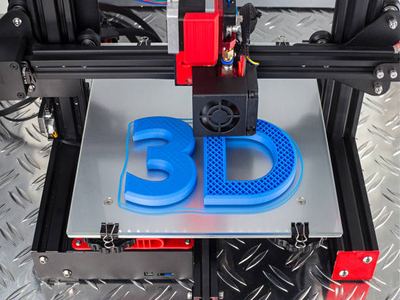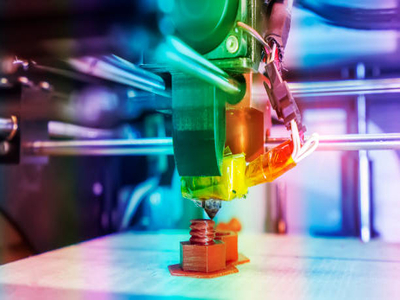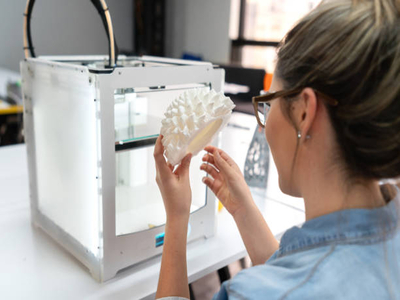What is resolution in 3D printing?
Resolution is a very important factor when it comes to 3D printing because it determines the level of detail that can be printed in a given object.
In this blog post, we’ll discuss what resolution is and how it affects 3D printing. We’ll also provide some tips on how to improve your print quality!
Importance of Resolution in 3D Printing
The higher the resolution, the higher the probability your 3D print will be clearer and more detailed.
Resolution is defined by how many pixels or DPI (dots per inch) your image has. The more pixels, the higher the resolution.
The less DPI, the blurrier the resolution, and the looser, less defined the print will be.
Additionally, the resolution of your 3D printing affects your layer thickness and vice versa. The higher the resolution, the thinner your layers can be.
Thus, resolution in 3D printing is critical and should not be overlooked because it affects everything from appearance, precision, and even printing time.
What Factors Affect Print Quality?

There are a number of different factors that can affect the quality of a printed image or object.
The most important factor in quality is resolution – or the accuracy and detail of the print.
Higher resolution prints tend to produce more realistic images and smoother surface details, while lower resolution prints may look pixelated or incomplete.
Other factors that can influence print quality include filament types, such as wood filament, infill percentage, and temperature settings.
- Using a more durable type of filament, such as nylon or polycarbonate, can help increase the overall durability and impact resistance of the final product.
- Increasing or decreasing the infill percentage from what is recommended by your printer’s software can help change the rigidness and flexibility of your print.
- Adjusting your printer’s temperature settings can impact its ability to stick where you want it to stick and maintain shape over time.
By understanding what factors influence the print quality, you can better optimize your printing process in order to get high-quality results every time.
Read More: How Small Can You 3D Print? We discuss print limitations and include a video of some of the smallest prints so you can see Micro Prints in action!
How Can You Improve Your Print Quality?

There are a few different ways that you can improve the print quality of your objects.
Use A Higher Resolution
When it comes to print quality, one of the most important factors is resolution.
In 3D printing, resolution refers to the number of points or pixels that are used to build an object.
Generally speaking, higher resolution results in more detail and a smoother finish.
In order to achieve the highest possible print quality, you should aim for a resolution of at least 300 dots per inch (DPI).
This will ensure that even the smallest features and intricate details are captured accurately, resulting in a print that looks and feels just like what you envisioned.
Additionally, increasing your print resolution can help reduce warping and other common issues associated with this type of fabrication.
If you are looking to take your prints to the next level, be sure to use a higher resolution!
Use A Lower Layer Height
3D printers build objects by depositing layers of material, one on top of the other.
The thickness of each layer is known as the layer height, and it has a direct impact on print quality.
In general, the smaller the layer height, the better the quality of the print because thinner layers allow for smoother surfaces and more precise details.
However, smaller layer heights also mean that prints take longer to complete. As a result, it is important to find a balance between print quality and speed.
For most applications, a layer height between 0.1 mm and 0.3 mm is ideal.
However, if you are looking for the highest possible quality, you may want to use a layer height as low as 0.05 mm.
Keep in mind that using very small layer heights will significantly increase your print time, so it is important to weigh your needs before making a decision.
Adjust Your Print Speed

The resolution of your printer refers to the number of layers printed every inch.
Adjusting this setting can help to ensure that these layers are stacked in a fine, even pattern.
This not only results in a more aesthetically pleasing final product but also prevents defects like rough edges or poorly fused sections.
To adjust your print speed, start by manually setting the layer height on your 3D printer using the control panel and dials or buttons on the machine.
Next, increase your print speed gradually until you are satisfied with the print quality.
Ultimately, it may take some trial and error to find the optimal setting for your individual printer and materials.
But, with patience and practice, you should be able to achieve high-quality prints at just the right speed.
Choose The Right Nozzle Size
3D printers build objects by extruding molten plastic filament through a small nozzle.
The 3d printer nozzle size opening determines the diameter of the filament that is extruded, and this in turn affects the resolution of the printed object.
In general, a smaller nozzle opening results in finer details and smoother surfaces, while a larger nozzle opening produces coarser details and rougher surfaces.
If you’re trying to achieve high-resolution prints, it is therefore important to choose the right size nozzle for your printer.
Unfortunately, there is no easy answer when it comes to selecting the perfect nozzle size.
The ideal size will vary depending on the type of object you are printing, the quality of your printer, and your own personal preferences.
A good place to start is by experimenting with different sizes and seeing what works best for you.
Calibrate Your Printer Regularly

Most 3D printers come with software that allows you to calibrate the printer.
This step is essential to ensure that your prints are of the best quality possible.
By calibrating the printer, you are setting the stage for success.
Two factors that you need to take into account when calibrating your printer are:
- Bed height
- Resolution
The bed height is the distance from the build plate to the nozzle.
Resolution is the smallest feature that your printer can print and it is important to note that both of these factors can affect the quality of your print.
If either of these factors is off, it can cause your print to be of poor quality.
That is why it is important to take the time to calibrate your printer regularly.
By doing so, you’ll ensure that your prints are of the highest quality possible.
Bottom Line
Resolution is one of the most important factors to consider when it comes to choosing a printer and setting up your prints.
By taking the time to understand what resolution is and how it affects your prints, you can ensure that you always produce high-quality prints.
Remember to experiment with different settings and find what works best for you. With patience and practice, you will be able to achieve the perfect print every time.
Read More